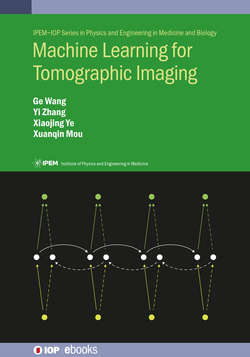Читать книгу Machine Learning for Tomographic Imaging - Professor Ge Wang - Страница 64
3.2 Training, validation, and testing of an artificial neural network
ОглавлениеIn this section, we will describe a number of key concepts and critical skills related to practical applications of an artificial neural network, selecting a dataset to train the network, cross-validating the model, and testing the trained model. We will also present closely related topics, including overfitting, bias, dropout, pruning, data augmentation, and so on. To better understand these basic concepts, let us take a look at the overall construction, training, and testing process of a convolutional neural network. The whole process is shown in figure 3.17, and can be divided into the following stages:
1 Designing: Given a specific task, we can design or select a convolutional neural network architecture based on our experience, including the topology and details on convolution, activation, pooling, loss function, and so on. Then, the weights of the neural network will be initialized.
2 Forward propagation: Training samples are fed into the network to produce the corresponding outputs. The input samples are those samples that are in the training dataset used to train the network, and the rest of the samples in the training dataset are used for validation, i.e. to verify the convergence of the network.
3 Backpropagation: The weights of the neural network are updated using the above-described backpropagation method.
4 Iteration: Repeat steps 2 and 3 until the network converges.
5 Measure the performance of the trained network on the testing dataset.
Figure 3.17. Workflow of designing, training, and testing an artificial neural network.
